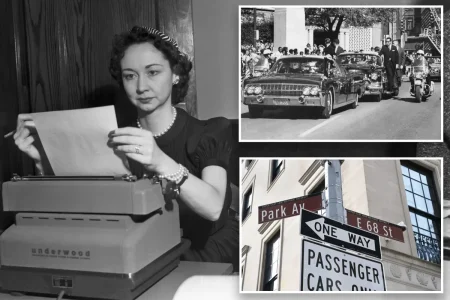Supreme Court to Rule on Controversial Use of Notwithstanding Clause in Provincial Legislation
Charter Rights at Stake as Canada’s Highest Court Examines Constitutional Override Powers
In a landmark moment for Canadian constitutional law, the Supreme Court of Canada is preparing to hear arguments in two pivotal cases that strike at the heart of the relationship between provincial powers and citizens’ fundamental rights. At issue is the controversial use of the notwithstanding clause—Section 33 of the Canadian Charter of Rights and Freedoms—which allows provinces to temporarily shield legislation from judicial review even when such laws potentially violate constitutionally protected rights. These cases represent a rare and significant examination of a constitutional provision that critics have called a “democratic safety valve” and detractors have labeled a “dangerous loophole” in Canada’s rights framework.
The notwithstanding clause, formally known as the override provision, was originally conceived as a compromise during constitutional negotiations in 1982, allowing federal and provincial governments to temporarily override certain Charter protections for renewable five-year periods. While rarely invoked in the Charter’s first three decades, recent years have seen a concerning trend of provincial governments turning to Section 33 preemptively—using it not as a last resort after courts have found rights violations, but as a shield against anticipated judicial scrutiny. The two cases before the Supreme Court involve separate provincial laws that implemented the clause in ways that constitutional scholars argue fundamentally alter its intended purpose. In one case, a provincial government invoked Section 33 after losing at lower court levels; in the other, a government preemptively included the override before any court had examined potential Charter violations—a move critics characterize as circumventing the normal constitutional dialogue between legislatures and courts.
Historical Context: From Constitutional Compromise to Contemporary Controversy
The notwithstanding clause emerged from the constitutional negotiations of the early 1980s as a compromise between federal authority and provincial autonomy—particularly important for securing the support of provinces concerned about excessive judicial power. For decades, the provision remained largely dormant, with governments generally reluctant to override court-recognized rights. Quebec’s occasional use of the clause to protect its linguistic and cultural policies represented most early applications, but the relative restraint in deploying Section 33 created an unwritten constitutional norm that the override should be used sparingly and with caution. Constitutional law expert Professor Emmett Macfarlane of the University of Waterloo notes that “the notwithstanding clause was designed as an extraordinary measure, not a routine legislative tool. Its increased usage threatens to normalize what was intended to be exceptional.”
This constitutional equilibrium has shifted dramatically in recent years, with several provinces demonstrating increased willingness to invoke the clause, often preemptively before courts have even ruled on potential rights violations. Ontario used it to uphold legislation limiting third-party election advertising after courts found Charter violations. Quebec employed it to shield language laws and religious symbol prohibitions for public servants from judicial review. These cases highlight an evolving tension in Canadian federalism: while provinces legitimately hold this constitutional tool, its expanding use raises profound questions about the adequate protection of minority rights against majoritarian pressures. The cases before the Supreme Court will force the justices to address whether there are implicit limits on how and when the notwithstanding clause can be deployed, or whether Section 33 grants provinces virtually unrestricted authority to override fundamental freedoms.
The Current Cases: Provincial Authority versus Charter Protections
The first case involves legislation that restricts certain forms of political expression during provincial election periods. After lower courts ruled the law violated freedom of expression guarantees under Section 2 of the Charter, the province invoked Section 33 to shield the legislation from further judicial scrutiny. Constitutional litigators representing affected civil society organizations argue this represents an abuse of the override provision, contending that provinces must provide substantive justification when deliberately overriding court-recognized rights. Government lawyers counter that the text of Section 33 contains no such requirement and that provincial legislatures maintain democratic legitimacy to determine when override use is appropriate. Justice Michael Moldaver, during preliminary proceedings, raised pointed questions about whether “repeated or reflexive use of the override provision might eventually constitute a form of constitutional convention violation, even if technically permitted by the text.”
The second case presents an even more constitutionally troubling scenario: a province that preemptively included the notwithstanding clause in legislation affecting minority religious practices before any court had reviewed potential Charter violations. This preventive application effectively denied affected citizens the opportunity to have courts assess whether their rights were infringed in the first place. Legal scholars have termed this approach “Charter-proofing legislation” and question whether it fundamentally undermines the constitutional bargain struck in 1982. “The entire premise of the Charter was that rights would receive judicial protection, with the override as an exceptional response to specific court rulings, not as a preemptive shield against judicial review itself,” explains constitutional rights attorney Catherine McKenna. The provinces involved maintain that Section 33 contains no textual limitation on when the clause can be invoked, arguing that requiring a prior court ruling would add restrictions nowhere present in the constitutional text.
Broader Implications: Democracy, Federalism, and the Protection of Rights
These cases transcend technical legal questions to address fundamental aspects of Canadian democracy. The Supreme Court justices must navigate competing constitutional values: provincial autonomy within the federal system, democratic governance through elected legislatures, and the judicial protection of fundamental rights—particularly for vulnerable minorities. International human rights observers have expressed concern about the increasing use of constitutional override powers, with the United Nations Human Rights Committee specifically questioning Canada about Section 33’s implications for rights protection. Legal scholars note that Canada remains one of few democratic nations with an explicit override mechanism allowing legislatures to temporarily set aside judicial rights determinations, placing these cases in a unique comparative constitutional context.
The implications extend far beyond the specific legislation under review. A ruling that places few or no limits on notwithstanding clause usage could embolden governments to routinely shield controversial legislation from Charter scrutiny. Conversely, a decision imposing implicit constraints on Section 33 would likely face criticism as judicial overreach into explicitly granted legislative authority. The Canadian Bar Association, which rarely takes positions on active cases, has submitted an intervention arguing that “while Section 33 represents a legitimate constitutional tool, its normalization as routine legislative practice threatens to fundamentally alter the Charter’s protection of minority rights against majoritarian politics.” Public opinion polling indicates Canadians remain deeply divided on the issue, with regional variations reflecting different conceptions of federalism and rights protection across the country.
Looking Forward: Constitutional Evolution in a Changing Canada
The Supreme Court’s eventual ruling will represent a pivotal moment in Canadian constitutional development. Chief Justice Richard Wagner has acknowledged the extraordinary significance of these cases, scheduling an unprecedented two full days for oral arguments to explore all dimensions of the legal questions presented. Constitutional historians note that how the Court navigates this controversy will shape the evolution of Canada’s rights framework for generations. Professor Peter Russell, a renowned constitutional scholar who witnessed the original Charter negotiations, observes that “the framers created Section 33 without clear guidelines for its use, perhaps intentionally leaving future courts and legislatures to develop constitutional conventions through practice and precedent.”
As the Court deliberates, fundamental questions about Canadian governance await resolution: Can provinces use the notwithstanding clause preemptively to avoid judicial scrutiny altogether? Must governments provide substantive justifications when overriding court-recognized rights? Does repeated use of Section 33 eventually undermine the Charter’s purpose? The answers will profoundly impact how Canadians understand their constitutional rights and the relationship between provincial authority and judicial protection of civil liberties. Whatever the outcome, these cases represent a crucial moment of constitutional reckoning in a diverse federation still working through the implications of its rights revolution four decades after the Charter’s entrenchment. For ordinary Canadians whose fundamental freedoms hang in the balance, the Court’s forthcoming decision will determine whether the Charter remains the transformative rights document its framers envisioned or whether provincial override powers will fundamentally reshape Canada’s constitutional landscape.










